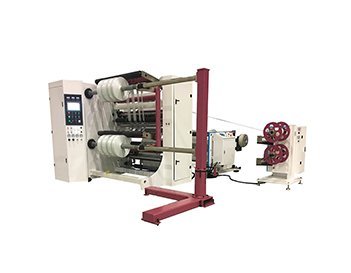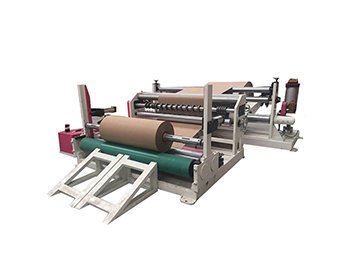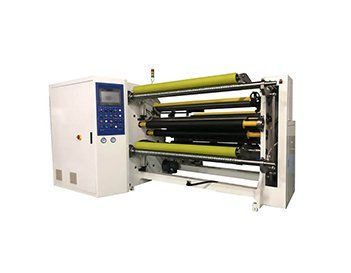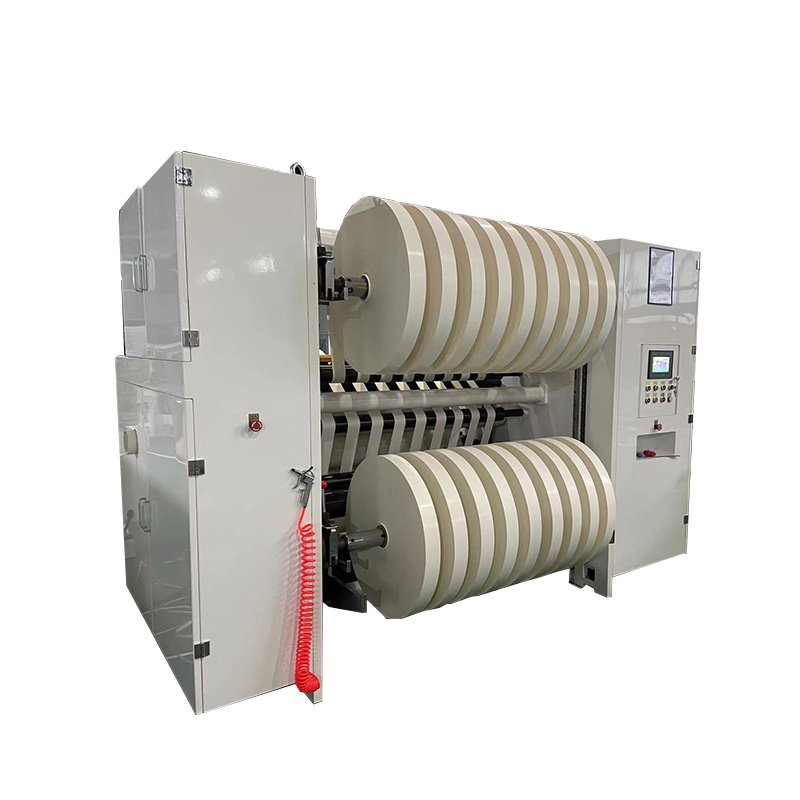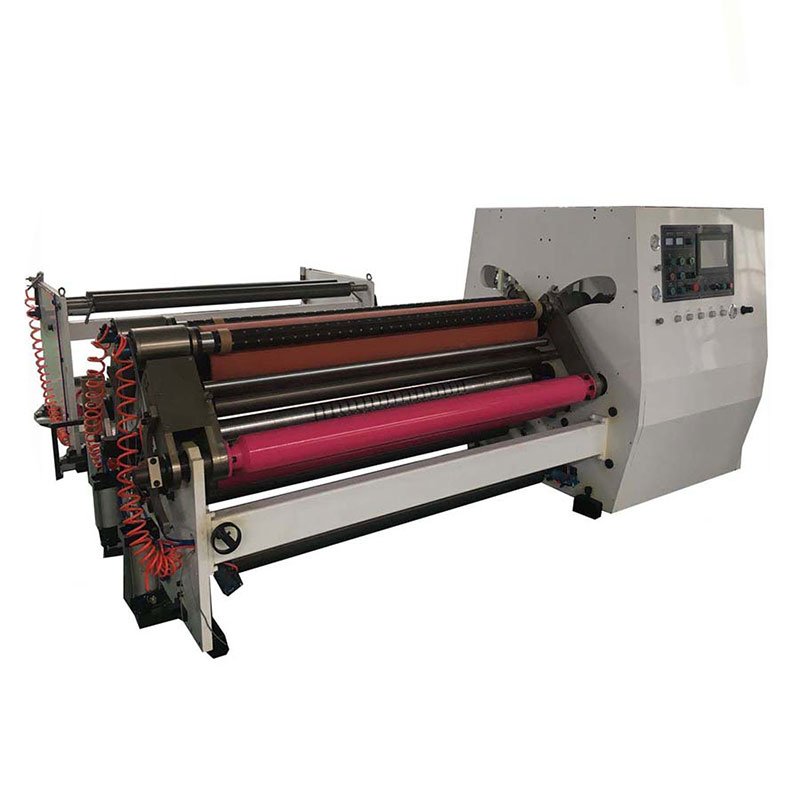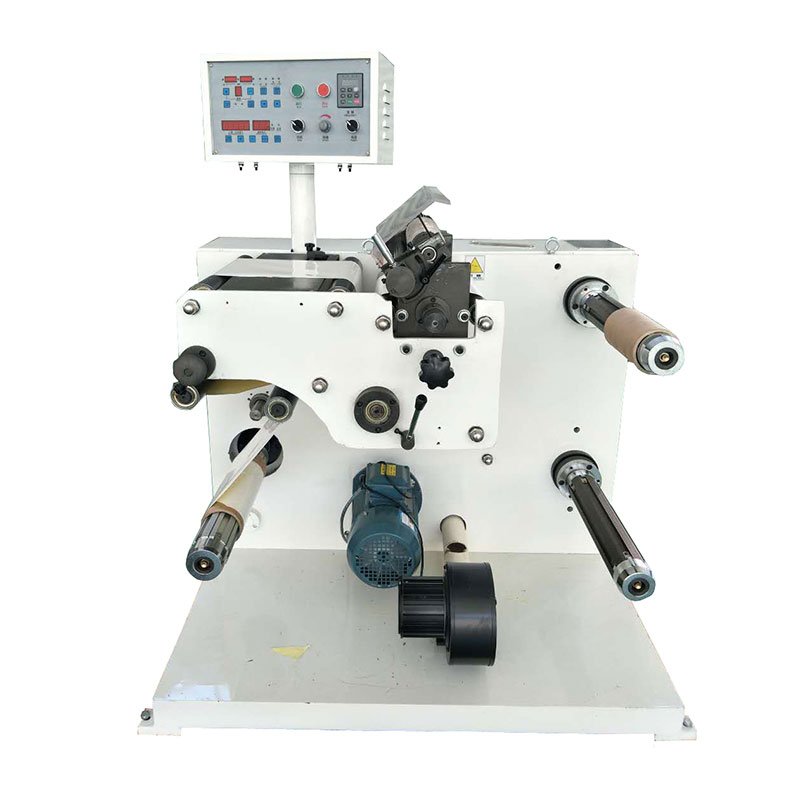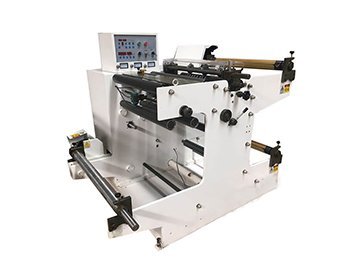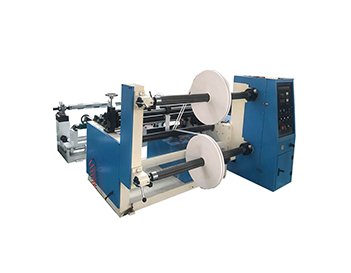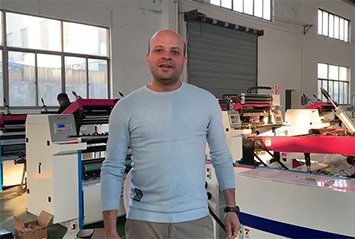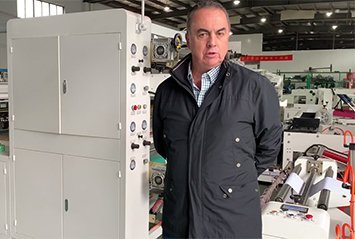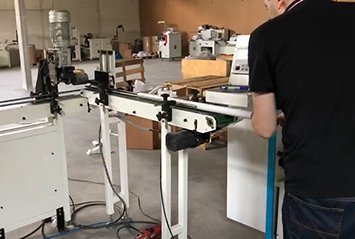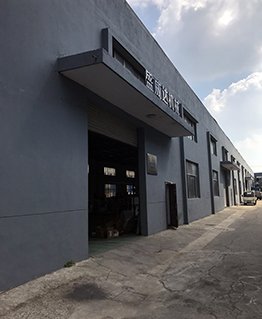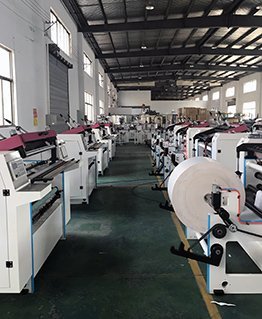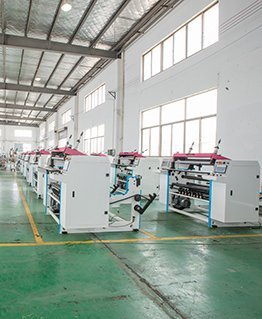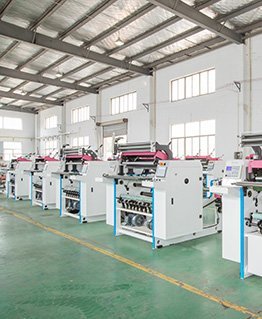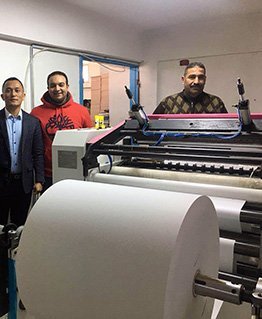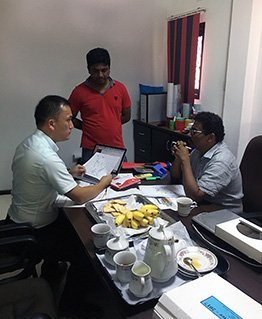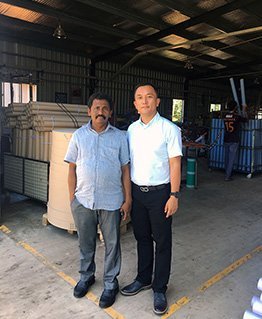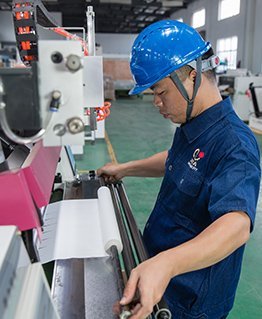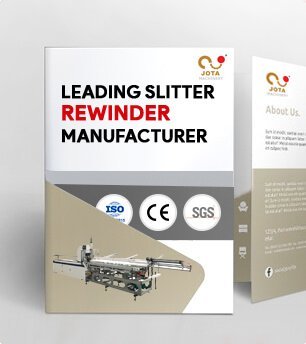Professional Slitting Rewinding Machine Manufacturer
- Paper, foil, fabrics, film, prepreg UD Tape slitting rewinding Machine
- Unwinding width ranges from 320mm to 3800mm
- Slitting Width ranges from 3mm to 3800mm
- Max. unwinding diameter is up to 1800mm
- Razor cutting and rotary shear slitting switch
- Transverse Spooling Technology
Jota Slitting Rewinding Machine
If you are looking for a suitable jumbo roll slitting rewinding machine whether you are in the field of printing, packaging, new energy, aerospace, or new carbon fiber technology materials, our professional team could meet your requirement to providing a suitable solution on slitting rewinding machine.
As a professional jumbo roll slitting rewinding machine manufacturer, we have not only 20 years of experience, but also a highly educated R&D team, advanced mechanical design team, and electrical software design team. These can ensure that our slitting rewinding machine can meet customer needs and conform to the market requirement.
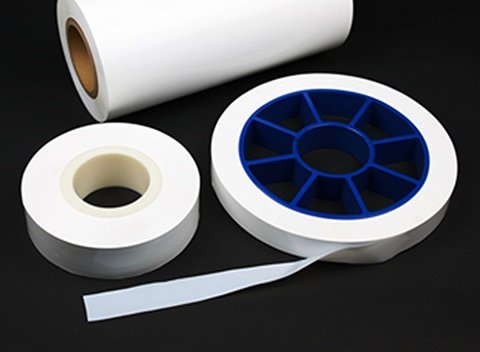
At the same time, our company is also completing its own upgrading and transformation. From the most basic paper and film roll slitting rewinding machine to the latest new energy carbon fiber and the slitting of aerospace materials, this is also a testimony of our own strength.
Currently, we can provide slitting machines for various materials. The width of parent mother rolls can reach from 50mm to 3500mm, and the slitting width can range from 3mm to 3500mm. There are various winding methods such as reverse winding, disc winding, and rewinding. The maximum diameter can be up to 1800mm. There are also various slitting models for you to choose from.
Many people have a misunderstanding about the slitting rewinding machine. You think that it is to find a simple machine to cut large rolls into small rolls or rewind them into small rolls. In fact, different material characteristics, hardness, tension requirements, and subsequent processes are different. The requirements vary greatly. For each different material, the material threading flowing route on the machine, the angle between the roller and the diameter of the roller, and the selection of the slitting knife are all professional technical issues.
If you are looking for a professional jumbo roll slitting rewinding machine supplier, Jota Machinery should be your best choice.
Jota slitting rewinding machine could be applied for many different materials,
such as adhesive labels, kinds of paper, film, foil, non-woven fabric, CFRP, CFRTP, FRP prepreg, etc.
For a deep discussion about Jota slitting rewinding machine, please just send us an inquiry.
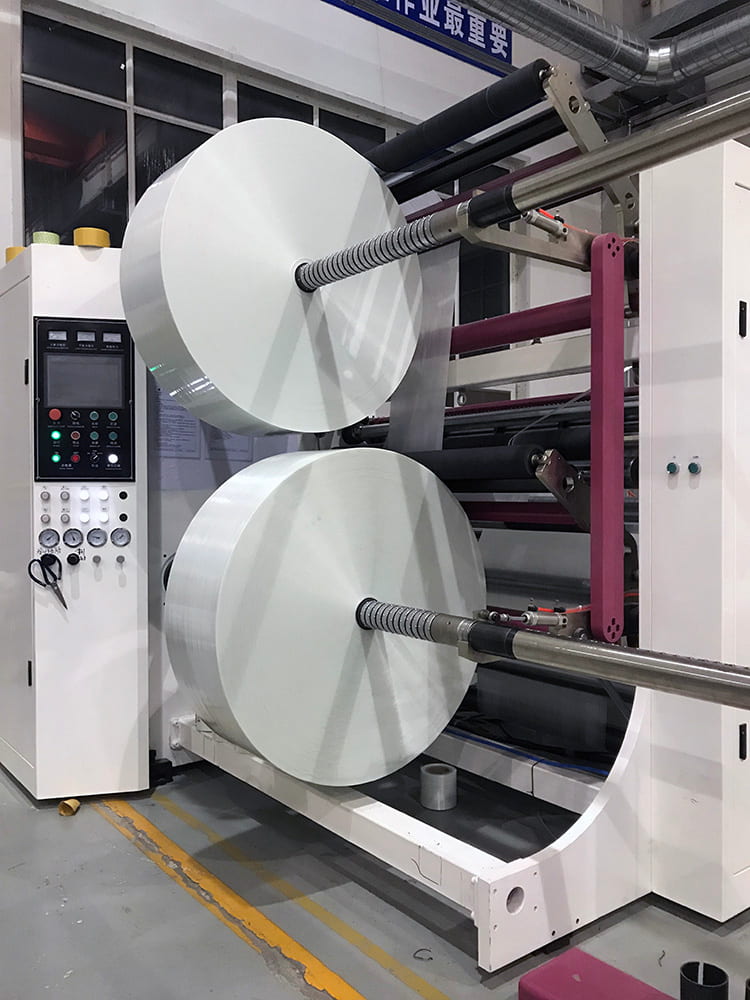
CFRP, CFRTP, FRP Prepreg UD Tape Slitting Rewinding Core Technology
Jota Machinery: Original Slitting Rewinding Machine Manufacturer in China
Jota is capable of manufacturing 30 sets of slitting rewinding machines in 1 month.
We also accept free material converting test, you just need to send some of your material to us.
we will use our Jota slitting rewinding machine test it, then show you the testing video.
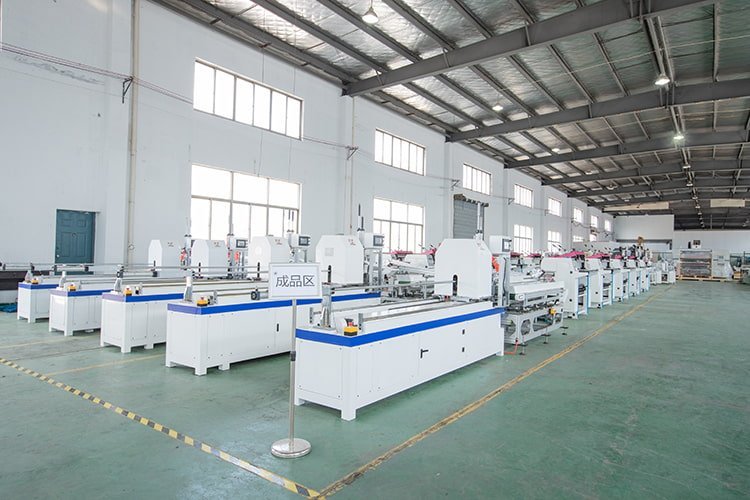
Jota Factory
Machining Material
- Visible high-quality components.
- Famous brands such as Siemens, Yaskawa, Delta, Schneider, Mitsubishi.
- Self-supporting CNC processed sheet metal, precision parts.
- Assembly raw materials provided by long-term cooperation suppliers.
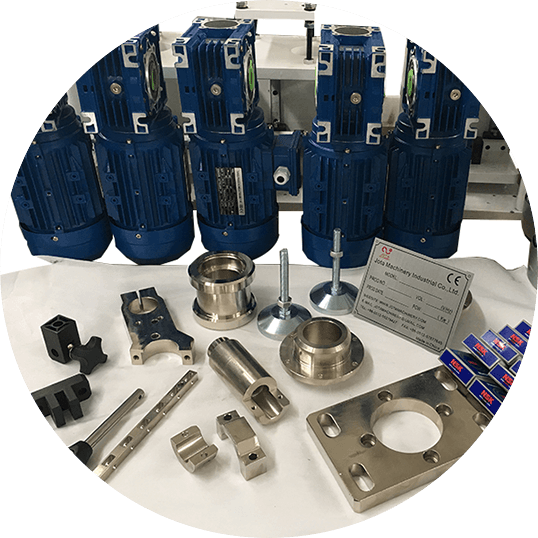
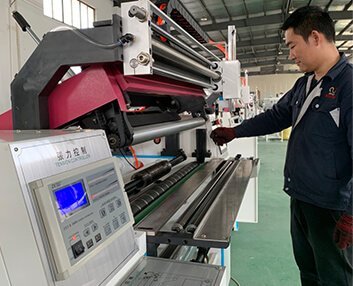
Installation and operation user manual, wire connection diagram, tension controller guide.
Installation and operation video tutorial.
One-on-one remote video call assistance.
On-site installation and operation guidance.
- Focus Factory
- Dear Customer
- Professional Team
Around 30-45 days, mainly depends on machine type.
Sure, it is our honor to work for you.
We will offer you some parts as backup, in case any part is broken within one year, we will sent you for free.
Sure, if we have client in your country, we will offer.
How to Choose Thermal Paper for Business
If you have made any purchases in the recent past and you were presented with a receipt, then there are very high chances that the receipt was printed on thermal paper.
A thermal paper refers to a special type of paper made with a special coating designed to be used for inkless printing with a thermal printer. When the paper is exposed to heat from the printing element, it forms a clear image without the need for ink or a ribbon.
Most of the time, the special coating will turn black on heating, though some thermal papers can print in different colors such as blue and red. Thermal paper is regarded as a vital component without which thermal printing would not be possible.
Currently, it is viewed as one of the most economical printing technologies given its low maintenance nature, as well as the fact that it comes with very low energy consumption. In this piece, we will discuss how to choose thermal paper for businesses.
Additionally, we will explore thermal paper technology, any health risks associated with these types of papers, and whether or not they are recyclable.
Keep reading to find out more!
Thermal Paper Technology
The technology used in thermal paper and thermal printing uses the transfer of heat, also known as thermal energy.
As already mentioned, the paper has a coating that changes color whenever it is exposed to heat. As such, no cartridge, tonner, or ink ribbon is needed for the printing.
The printing is achieved with the help of small compact thermal printers that require very minimal maintenance.
The Structure of a Thermal Paper
The structure of thermal paper features various layers starting with a base layer which is then followed by a few special coating layers.
Here is a brief description of the various layer you would find on a thermal paper-:
- The base layer – this is the very first layer of thermal paper. The base layer normally features a thermal layer.
- Precoat layer – the precoat layer is the layer immediately after the base layer. It is responsible for improving the heat insulation, anchoring, uniformity, and smoothness of the thermal layer.
- Thermal layer – this is the layer responsible for producing prints or images upon coming into contact with heat. This layer is normally infused with chemicals such as dyes, and sensitizers which change color whenever they are subjected to heat.
During the manufacturing process, a topcoat layer is added to the thermal layer to enhance the longevity of the print or the image produced at the time of printing. In some instances, some manufacturers will add a back coat to the backside as a way of improving printability and protecting the backside from adhesives.
Benefits of Using Thermal Papers
There are various types of papers that can be used in printing receipts and other similar applications instead of thermal papers.
However, thermal papers have always emerged as a favorite compared to other receipt papers.
If you are wondering why this is the case, then read below to understand some of the benefits that come with using thermal papers-:
Thermal papers are extremely versatile
Thermal papers usually produce speedy and high-quality images. Because of its versatility, its use is not limited to just one industry or one application – printing shopping receipts.
The technology and the papers are widely used in a variety of businesses and industries. It is the preferred paper of choice in POS applications like those in grocery stores, ATMs, and gas stations because of its ability to print faster and accurately.
It is also highly utilized in the healthcare field due to its ability to give high-quality images used by medical experts to give a proper and accurate diagnosis.
Faster output
Thermal printers where thermal papers are used work faster than most of the other types of printers. The printer needs only milliseconds to thermally transfer heat from the source to the thermal printer head to produce the images or prints.
This ability to print faster not only enhances efficiency when serving customers but also increases the speed of tasks such as printing labels and packages.
To the staff using the thermal printers and the thermal papers, the ability to work fast greatly enhances their productivity.
Accuracy and good quality
Thermal papers feature an even coating on the surface. This design feature is responsible for producing high-definition images accurately.
Since there is no ink being used in the printing process, there are no smudges that would normally lead to unclear images or words that are difficult to read on the final output.
Thermal papers are affordable
Every business desire to maximize profits while at the same time minimizing their costs. The use of thermal papers and thermal printers have greatly helped a myriad of businesses to cut their printing costs.
This is because thermal paper rolls are relatively affordable and the prices have the potential of going down further if you choose to purchase them in bulk.
Under proper storage conditions, thermal papers can last for a very long time, hence, you don’t have to worry about them getting damaged due to long storage.
Reduced printing costs
This is another cost-saving aspect that businesses will enjoy when they adopt the use of thermal papers and thermal printers.
To begin with, thermal papers don’t use ink, hence, there will be a significant reduction when it comes to the purchasing of printing ink.
Also, thermal printers consume very little energy. As such, you won’t have to worry about blotted energy bills occasioned by a defective printer.
They come with a low maintenance cost
One of the top advantages that come with using thermal paper rolls obtained from a reputable thermal paper production line is that they require less maintenance.
With these rolls and the thermal printers, you won’t have to worry about replacing ink cartridges now and then.
The maintenance you have to do is ensure that the printer head is clear and clean with regular wiping. Also, unlike other types of printers, you won’t be faced with constant breakdowns calling for complicated repairs.
The printer will have to be serviced, but less frequently.
Durability
Thermal papers are not only durable but a lot of moving parts are not required with this printing technology.
It is simple, easy to run, and gives long-lasting results. The speed, as well as the quality of the output, is not going to get compromised even when you are working under a constant and heavy workload.
You can’t expect this kind of convenience with forms of printing papers or printing technologies.
How to Identify Thermal Papers
If you are in the market shopping for thermal papers, or you are thinking of investing in a fully automated thermal paper machine so that you can start dealing in thermal papers, you must know how to tell the difference between thermal paper and other types of papers. The good news is that you don’t need to have a degree in rocket science to do this.
To begin with, you must remember that thermal papers have smooth surfaces with dye chemicals. As such, they are smooth to touch and will change color whenever they are exposed to heat. Also, it is very difficult to write on thermal paper with normal pens.
To test if you are dealing with a real thermal paper roll, try it out with a thermal printer. If you can’t access a thermal printer, however, try running your fingernail firmly across the paper. Then check to see if a mark has been left.
If you leave a mark behind after running your fingernail across the surface of the paper, then that is thermal paper. Otherwise, it is nothing close to thermal paper.
Attributes of a good thermal paper – What to look for when buying thermal paper rolls
Whether you are looking for thermal paper slitting machine prices because you want to join the industry as a distributor, or you are looking to replenish your current stock of receipt papers, you must know how to choose the right thermal paper rolls.
There are so many brands as well as vendors in the market today and know knowing what to look for can easily make you end up with the wrong type of paper.
Below is a brief overview of some of the vital factors you should consider when choosing thermal papers for business-:
The heat sensitivity of the thermal paper
The sensitivity of a thermal paper is an indication of how it will react when it is exposed to a certain amount of heat energy.
There are mainly two distinctions when it comes to the sensitivity of thermal papers – high heat sensitivity and low heat sensitivity.
The sensitivity of the paper also has a direct impact on the quality of the print or the image, as well as its longevity.
It should be noted that the printer’s heat and the paper’s sensitivity are inversely correlated. This simply means that a printer with high heat levels will provide the best results with a thermal paper that has low heat sensitivity.
Conversely, a printer with low heat output will give very good results with a thermal paper with high heat sensitivity.
Consequently, you need to know your printer’s heat output levels before you shop for thermal paper rolls.
The coating of the paper
All thermal papers are designed with a base coat and a thermal coat. However, not all of them come with a topcoat.
The topcoat is usually an extra layer meant to provide additional protection against certain specific environmental elements.
For better results and longevity of the final output of the paper, it is highly recommended that you go for thermal papers with a topcoat.
If, however, you need thermal papers with limited resistance properties, then you can just go for the versions lacking the topcoat.
Also, if you plan on customizing these papers in a thermal paper production line, then you have to determine whether or not you will be using thermal papers with top a topcoat.
The thickness of the thermal paper
Thicker thermal papers are usually perceived to be more durable, hence, of good quality. But the thicker the paper, the shorter the roll, implying that you will print fewer documents before the roll from the fully automatic thermal paper slitting machine is changed.
As such, the choice of the paper’s thickness may be a strategic decision for the business. If you prefer quality to quantity, then go for the thicker thermal papers.
The smoothness of the paper
Always consider purchasing thermal paper rolls that are smooth both on the back and on the front.
This is because non-smooth thermal rolls may come with a significant amount of dust that might affect the printer head after some time.
It may also be a health hazard to the staff if they have to handle hundreds of rolls per day.
The moisture tolerance of the paper
The prints or the images on certain types of thermal papers may lose legibility if they come into contact with moisture.
If you suspect that your documents may get severely damaged when exposed to moisture, then you should consider going for thermal papers designed with additional moisture resistance or some kind of synthetic material that can offer additional protection against the effects of moisture.
Also, you must store the papers in safe and dry environments where they will never be affected by moisture.
The size of the paper
The size of the thermal paper you buy will be primarily determined by the machine you are going to use it on. Thermal papers are available in various sizes and if you don’t want to go wrong with the size, simply check the recommended size for your printer.
From there, you can tell the exact length, size, diameter, and chemical coating of the recommended paper type. If you are not sure of the size, you can simply ask thermal paper production line workers to help you figure out the right size based on the specifications of your machine.
The archivability of the paper
If you will be printing documents that will be referenced and stored for longer, then you must go for thermal papers that will withstand the effects of heat, moisture, and other environmental factors for a long time.
But while you think about archivability, you must also think about the right storage conditions. You may get high quality papers from a reputable thermal paper production line, but if you subject them to poor storage conditions, then they could end up damaged sooner than you thought.
Quantity of the thermal papers
The quantity of the thermal paper you buy has no strong relationship with the quality of the papers.
However, you should consider buying the rolls in bulk if you need them for business. Purchasing them in bulk will not only allow you to take advantage of great discounts from the suppliers, but also you won’t have to worry about stopping operations because you have run out of printing paper.
Most suppliers with fully automatic thermal paper slitting machines will also be glad to work with you and offer you discounts if you will be purchasing in bulk.
This sounds like a small avenue for saving some money, but it is worth exploring.
How long does a thermal paper last before it fades?
The longevity of the print or the image on the thermal paper is a factor of the paper’s quality and the storage conditions.
For a start, if you want the papers to take long before fading, then always go for the best quality thermal papers.
If the storage conditions are right, then it is expected that the image or the prints on the thermal paper will last for between seven and ten years.
How to restore faded thermal papers
What happens if the thermal papers were accidentally subjected to poor storage conditions and they end up compromised, but you wish to recover the prints or the images?
Well, it may be possible to restore faded thermal papers.
This, however, will depend on the extent of the fading and the specific restoration technique used. Here is a brief look at some of the methods you can use to attempt to restore faded thermal papers-:
Scanning and digitally restoring the receipts
If the thermal paper’s surface is still white, it may be possible to have it scanned as you would do to normal colored photos.
After the scan is complete, you can open the photo using a photo editing application such as Photoshop.
With the photo editing app, all you have to do is make a negative of it by simply adjusting the image settings.
This action will try to bring more clarity to the image, hence, helping to restore what was originally printed. You can then digitally store the newly restored document.
Applying heat to the thermal paper
If you can’t access good photo editing applications like Photoshop or you don’t know how to use it properly, then you can still use heat to try and restore the faded thermal paper.
You will be using your hairdryer for this approach. All you have to do is set your hair dryer to medium heat and apply heat to the front of the paper until the prints or the image becomes clear.
In the absence of a dryer, feel free to do the same using a light bulb. Be sure to keep the source of the heat a few inches from the paper to avoid damaging it completely with excessive heat.
Use Paperistic App
Another easy way to restore faded thermal papers is to use the Paperistic mobile app.
With the app, all you have to do is scan the paper with the “readable” or “monochrome” filters on. These settings will adjust the color levels and also darken the faded texts or images to make them more legible.
Is BPA on thermal paper a health risk?
Bisphenol A, commonly known as BPA is a synthetic chemical and one of the components used in the manufacturer of thermal papers.
Several studies have linked a high concentration of this substance in the body to various forms of cancer, including prostate and breast cancer.
As such, there are concerns that its use should be banned completely, or people should stop using thermal papers due to the inherent health risks.
However, studies suggest that the substance is only harmful when it accumulates to certain levels in the body.
The good news is that most manufacturers have put in place measures to reduce the reliance on chemicals in the production of thermal papers. This has made some companies start producing BPA-free thermal papers.
For the general populace that only handles receipts for a short period following a purchase, there are no significant health risks that come with the small exposure to the extremely low levels of BPA.
Therefore, to a regular guy on the streets, the BPA on thermal paper is not a health risk. But to those involved in mass production of thermal papers, or those working in thermal paper production lines, all the necessary precautions must be taken to avoid overexposure.
Is thermal paper recyclable?
Recycling thermal papers have not been possible due to their high concentration of BPA and other harmful phenols.
Most of the recycling processes can’t effectively remove the BPA and the phenols contained in the paper. They can’t also be composted for the same reasons.
Conclusion
Thermal papers are the preferred receipting material for many businesses across multiple industries. Not only receipts, but its application varies widely and extends even into the medical field.
For better results, you should learn how to shop for the best quality thermal papers out of the myriads of types and brands available in the market today.
With the insights above, you shouldn’t struggle with choosing thermal papers again.
If you are thinking of having a thermal paper production line, you should also consider the insights on quality since they will put you in good standing with your customers.




